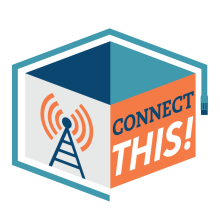RDOF, Universal Service Fund, and the Future of Video | Episode 50 of the Connect This! Show
Join us live on Thursday, August 18th, at 3:30pm ET for the latest episode of the Connect This! Show. Co-hosts Christopher Mitchell (ILSR) and Travis Carter (USI Fiber) will be joined by regular guest Kim McKinley (UTOPIA Fiber) and Casey Lide, Partner at Keller and Heckman.
The panel will talk about LTD Broadband and Starlink recently getting removed from the Rural Digital Opportunity Fund (RDOF) by the FCC, the most recent Universal Service Fund report sent to Congress, and whether the new streaming video landscape is materially different from the old cable TV model (and if we should care).
Subscribe to the show using this feed on YouTube Live or here on Facebook Live, on find it on the Connect This! page.
Email us [email protected] with feedback and ideas for the show.
Watch here on YouTube Live, here on Facebook live, or below.




